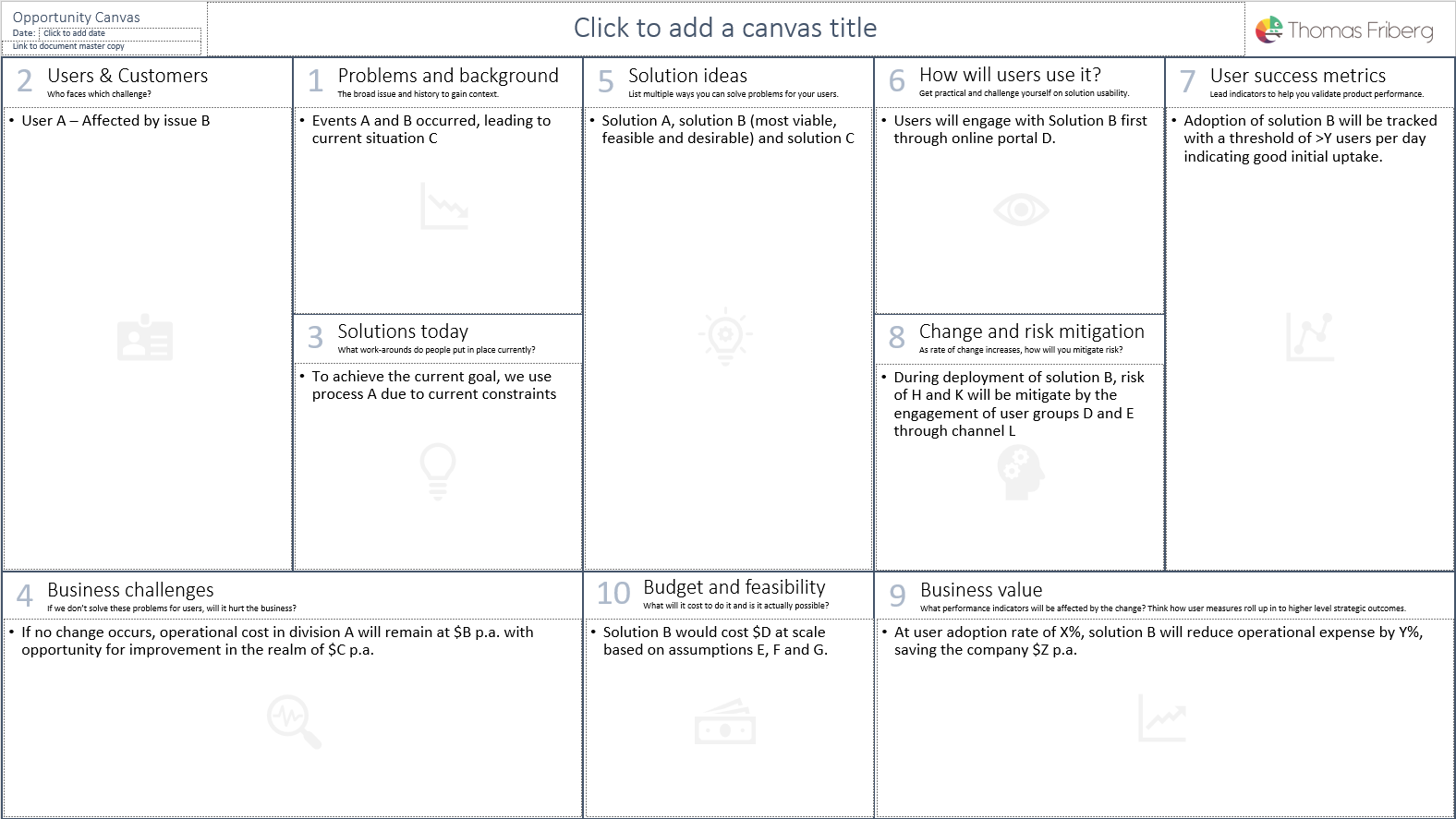The Opportunity Canvas
Download this PowerPoint Template to get started (file hosted on Google Drive).
See this blog article for the introduction of this handy tool for scoping opportunities in a 1-page view in a corporate context.
This Opportunity Canvas resources is a simple PowerPoint template which you can use to get started with characterising your portfolio ideas to create value or to ask some questions about the desirability, viability or feasibility of your existing in-flight initiatives.
Refer to this Blog for why an ‘off the shelf’ template is only part of the solution and why you’ll want to test the suitability of the level of detail asked in your company’s context and maybe seek help for how you might change a leadership mindset that is focussed on delivering deterministic business cases to one that embraces the ambiguity that has been in your projects portfolio all along.
A ‘how-to’ for your first canvas
Characterise the problem
Ask yourself: What is the problem? What is the context that tells you at a high level that something is either not working as well as it could or that there is an opportunity that is yet to be exploited. Fill in the one or two bullet points in the first cell: 1 Problems and background
Continue to 2 Users & Customers and ask yourself who is actually affected by this problem or who is indicating that an opportunity exists for change.
Where there is an existing solutions (albeit ineffective), indicate how the users make do with the existing approach.
In cell 4 Business Challenge, ask ‘Who cares?’ in terms of business value. What is the magnitude of the impact of the challenge to your business. Is the problem big enough to act on?
Characterise some solutions
Form some hypotheses on solutions to the problem. Remember that for ambiguous scopes, we will rarely know if the solution we intend to build will solve the problem until we start building it and testing prototypes with our users. List the solutions in 5 Solution ideas
Cell 6: Get practical about what will be different about a preferred solution and the current state. How will users feel the difference?
User success metrics: Ask how you’ll know if you’re solving the problem in an objective sense. Will you survey users to ask if you are solving their problem, will you see key business metrics change? How will you know if you’re on to good solution that you want to scale to other user groups?
Once you’ve had a chance to characterise what good looks like, what might be the barriers to success and how might you mitigate those risks? Note the most important ones in 8 Change and risk mitigation.
Check if the solution will work out economically
At first, this may be hard to answer but at the start, it’s best to sense check whether this challenge, if solved will cost more money than it will make. Is it a good investment? If value or benefits are defined in a non-monetary sense, is this opportunity likely to deliver more value per dollar invested than the next best opportunity? State your assumptions and as your opportunity matures, check whether the opportunity is still attractive to invest in or scale to other users, locations or markets.
Looking for help? Feel free to drop a comment in to the blog post or go to the Contact page and maybe I can share some advice.

